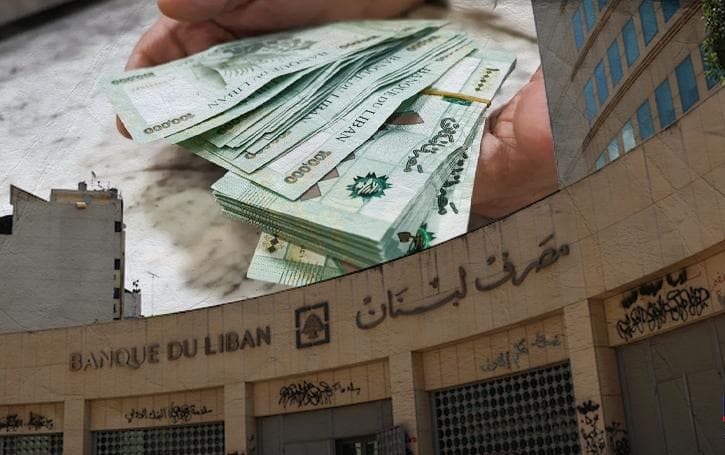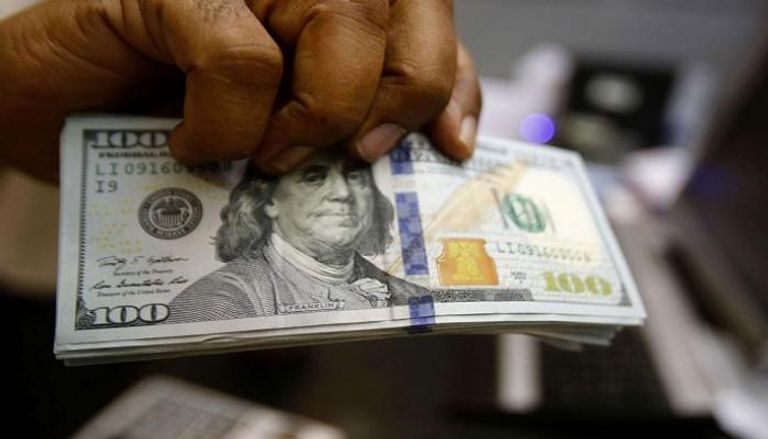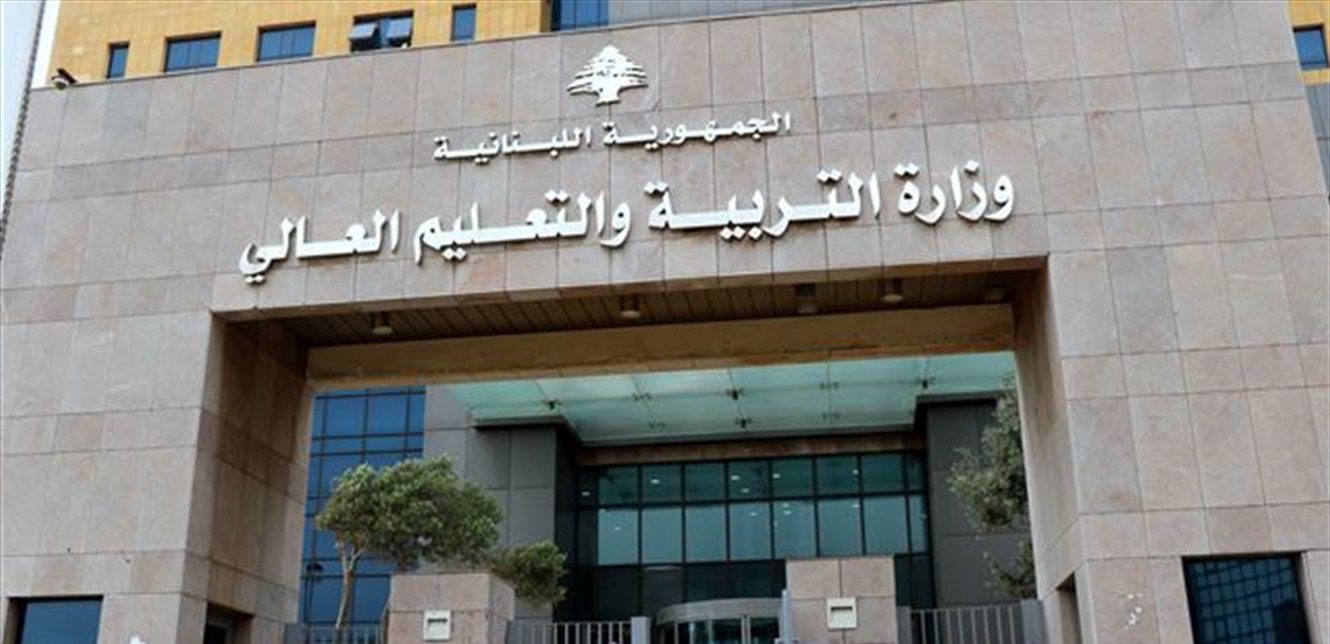وسط الأجواء الضاغطة من اللااستقرار، بل معالم الحرب المتدحرجة، يلفت أنظار الكثيرين استمرار استقرار سعر صرف الليرة اللبنانية الذي يوحي أنّه لا يزال ممكناً الخروج من الدولرة… إلامَ تشير التجارب الدولية؟ أي شروط يفترض تحقيقها قبل البحث باستعادة الثقة بالعملة الوطنية والخروج من دوامة الدولرة، لا سيما منها المرتفعة؟
بعد الحرب اللبنانية (1975-1990) في عام 1993، تخلّى لبنان عن نظام سعر الصرف العائم Free Floating. لذلك، وبعد اعتماد نظام ربط زاحِف حتى الانتقال عام 1998 إلى Crawling peg، اعتمدَ على تخفيض سعر الصرف تدريجاً حتى تطبيق الربط التقليدي لنظام عملة واحد مُلزم Conventional soft peg to one currency LBP إلى USD بسعر 1501-1514 بمتوسط 1507.5 منذ 1997.
تؤكّد الأدبيات الاقتصادية في جميع المنشورات الدولية في السياسة النقدية للبلدان المدولرة من ميشكن وسافاستانو (2001) مروراً بكالفو وفاك (2002)، كالفو وميشكن (2003)، غارسيا وسوتو (2004)، أوسيتفيلد (2006 و2008، 2009)، إينشغرين (2007 و2008 و2009)، كالفو (2008)، اللييغريت (2011، 2015) وهوسمن (1999، 2000) وبونسو في مختلف منشوراته عن البلدان المدولرة جداً (2005… 2019) وجميع تقارير صندوق النقد الدولي والنظريات حول سياسات المصرف المركزي، أنّ السياسة النقدية التي لا يمكن أن تكون فعّالة في ضبط الكتلة النقدية، لأنّ معظم السيولة المتداولة هي بالدولار الأميركي وليس بالعملة الوطنية، ما يُحتّم الانتقال إلى ضبط سعر الصرف…
وهذا بالأساس سبب الانتقال من نظام سعر الصرف العائم إلى الربط المَرن في لبنان عام 1993 نظراً للمستوى المرتفع الذي بلغته الدولرة وتأكيد تقرير الاقتصادي مولير (1994) أنّ الدولرة في لبنان تعكس حالَ هيستيريا يَستحيل تخفيضها حتى بعد تعافي الاقتصاد… وهذه هي العبارة نفسها التي وردت في تقرير البنك الدولي في تشرين الثاني 2022 عن لبنان، بالتأكيد على الطابع الثابت للدولرة وغير القابل للتراجع حتى بعد تعافي الاقتصاد اللبناني بعد الانهيار الذي أسقطَ منذ العام 2019 القدرة على الحفاظ على الربط المَرِن لسعر الصرف.
علماً أنّ معظم البلدان التي تشهد حالات مماثلة تكون قد عرفت حرباً أو أزمة هوية ونزاعات سياسية حادّة وصراعات تفقد الثقة بالمناخ الاستثماري فيه، وتجعل العملة الوطنية هشّة، وهي معظمها أيضاً بلدان صغيرة الحجم منفتحة الأسواق ويطغى فيها قطاع الخدمات ويَتَّكِل فيها ميزان المدفوعات على اجتذاب الرساميل أكثر منه على حجم التصدير…
إنّ تخفيض الدولرة كان يفترض أن يحصل في فترة الاستقرار النقدي الاقتصادي السياسي والأمني… أمّا وأنّ سعر الصرف حافظ على مستواه على الرغم من الاهتزاز الامني، وبعد أن بلغت الدولرة ذروتها، فهذا لا يعني إمكانية الخروج من الدولرة! بل إنّ الدولرة شبه الشاملة نفسها هي التي ساهمت بالاستقرار لشح السيولة المستخدمة بالليرة اللبنانية.
كان يمكن البحث بالموضوع وفق استراتيجية مدروسة مع وجود احتياطات فعلية من الدولار في البنك المركزي أو بعد حصول صدمات إيجابية، لكن حتى وَقتذاك لم تَزدْ ثقة الناس بالليرة اللبنانية وبقيَت معدّلات الدولرة تفوق 70%. فكيف اليوم؟
غالباً ما يكون الحجم الإجمالي لتدفقات العملات الأجنبية – المرتبطة بالمعاملات الجارية وحسابات رأس المال – بدلاً من درجة حرّية حركة الرساميل، هو المحرّك للمراجحة بين أسواق المال وأسواق العملات الأجنبية، ما يؤدّي بدوره إلى تشكيل طبيعة انتقال النقد. الصدمات الخارجية يمكن أن تكون صدمات الميزان الجاري أو ميزان الرساميل، ويمكن أن تكون للبلد حرّية حركة الرساميل من دون أن يعني ذلك حتماً إمكانية تدفّقها إليه.
من ناحية أخرى، حتى عندما تكون حركة الرساميل مقيّدة نسبياً، فإنّ قدرة البنك المركزي على التحكّم بالفائدة يمكن أن تكون صعبة، خصوصاً عندما تكون احتياطيات العملات الأجنبية منخفضة، ويكون الاقتصاد معرّضاً إلى صدمات كبيرة في شروط التجارة والعملات، فيكون الخيار الأمثل باعتماد سعر صرف يتماهى مع طبيعة الصدمات – سواء كانت فعلية أو إسمية – ودرجة حرّية حركة الرساميل.
وفق علم السياسة النقدية تتطوّر الدولرة عموماً عندما لا تؤدّي العملة المحلية أداءها الأساسي لوظائفها كما يجب، مقارنةً بالعملات الأخرى التي يمكن الوصول إليها. الوظائف الأساسية للعملة هي القيمة الاحتياطية، ووسائل الدفع، ووحدة الحساب.
عادةً، يتطلّب إلغاء الدولرة مجموعة من سياسات الاقتصاد الكلي والسياسات تَطال تدابير الاقتصاد الجزئي، لتعزيز جاذبية العملة المحلية مقابل العملة الأجنبية. وعلى خلفية استقرار الاقتصاد الكلي، تمّ اتخاذ تدابير عدة يمكن أن تعزّز إلغاء الدولار. وتتراوح بين التدابير القائمة على السوق والتي توفّر الحوافز لعكس استبدال العملة، إلى التدابير التي تحظّر أو تحُدّ بشكل صارم من استخدام العملات الأجنبية العملة (إزالة الدولار قسرياً).
يتمّ تسهيل عملية التخلّص من الدولرة من خلال التسلسل السليم للسياسات وتدابير الاقتصاد الجزئي. ومن الممكن أيضاً أن يتمّ التخلّص من الدولرة بالتوازي مع سياسات الاستقرار الشامل.
وفي كلتا الحالتَين، يتعيّن على صنّاع السياسات أن يأخذوا في الاعتبار المخاطر، بما في ذلك هروب رؤوس الأموال، عدم الوساطة وعدم استقرار القطاع المصرفي.
الخطوة الأولى نحو التخلّص من الدولرة هي تحقيق استقرار الاقتصاد الكلي، مع التركيز على تخفيضٍ موثوق للتضخّم واستقراره. وتشمل سياسات الاستقرار المالية وتوحيد السياسة النقدية وتشديدها بشكل مناسب لخفض معدل التضخم.
خلال الدولرة ومع إلغائها، قد تهدف السلطات إلى استعادة رسوم سك العملات، وتكييف كمية تداول العملة الوطنية مع الاحتياجات المحلية، وإدخال نظام أكثر مرونة لسعر الصرف في نهاية المطاف، أو التخفيف من المخاطر التي تهدّد الاستقرار المالي.
توفّر توقعات ارتفاع قيمة العملة المحلية رهاناً أحادي الاتجاه لاقتراض العملات الأجنبية، ممّا يدعم الطلب على القروض بالعملة الأجنبية. طالما أنّ المصارف تستفيد من سهولة الوصول إلى التمويل الأجنبي (تدفق رأس المال)، فإنّها ستستفيد أيضاً من ارتفاع قيمة العملة المحلية من خلال الحفاظ على مركز مفتوح قصير الأجل، وتشجيع الإقراض بالعملة الأجنبية.
قد يساعد إدخال متطلبات الاحتياطي الالزامي، والودائع الدائمة وتسهيلات الإقراض وعمليات السوق المفتوحة، في استقرار الاقتصاد المحلي وسعر الفائدة بين المصارف.
كما أنّ ضبط الأوضاع المالية يمكن أن يساعد في تقليل الحاجة الحكومية للاقتراض بالعملة الأجنبية، بالتالي تقليل دولرة الحكومة بشكل مباشر لالتزاماتها. كما أنّه يقلّل من الحاجة إلى تمويل البنك المركزي للديون الحكومية، ممّا يساهم في تقليل الفرق بين أسعار الفائدة المحلية والأجنبية.
كما أنّ نظاماً ضريبياً لا يتعامل مع الدخل من العملات الأجنبية بأكثر فائدة من الدخل من العملة المحلية، لن يخلق تحيّزاً تجاه الاحتفاظ بأصول بالعملة الأجنبية.
فضلاً عن ضرورة إدارة نَشطة للدين العام تهدف إلى إصدار سندات محلية ومن شأن السندات المقومة بالعملة (إذا لزم الأمر، مع مؤشر التضخم) أن تؤدّي إلى إلغاء الدولرة في الميزانية العمومية للحكومة، وتعزيز سوق الأوراق المحلية، والسماح بالمزيد من المرونة في سعر الصرف.
وفي ظل غياب الثقة بالعملة المحلية الأصول المقومة بالعملة، فإنّ وجود نظام ربط موثوق به يمكن أن يعزّز الاستثمارات في مثل هذه الأصول. إنّ تحرير البنوك من الضوابط الإدارية على تحديد أسعار الفائدة يجعل من الأرجح أن تصبح أسعار الفائدة الحقيقية المحلية إيجابية، ممّا يساعد في تعزيز استخدام العملة المحلية.
ويجب أن تعمل الحكومة بالعملة المحلية إلى أقصى حَدّ ممكن، عبر زيادة الضرائب بالعملة المحلية التي يمكن أن تدعم زيادة الطلب على هذه العملة، وكذلك المدفوعات العامة للأجور والسلع والخدمات من خلالها.
في حين أنّ استخدام المساعدات الأجنبية بالعملة المحلية – المساعدات الخارجية إذا تمّ استخدامها بالعملة الأجنبية في البلد المتلقّي قد يزيد من الدولرة. في البلدان الصغيرة أو في مرحلة ما بعد الصراع، والتي غالباً ما تكون على درجة عالية من الدولرة، يمكن للمساعدات الخارجية أن تؤدي دوراً كبيراً في الاقتصاد.
ويجب أن يضمن نظام المدفوعات المحلي العملة المحلية المدفوعات بشروط مؤاتية على الأقل، مثل تلك المتعلقة بالعملة الأجنبية المدفوعات. كما لا ينبغي إعطاء الأفضلية لحاملي العملات الأجنبية على أولئك الذين لديهم فقط إمكانية الوصول إلى التمويل بالعملة المحلية.
ولا يوصى باتخاذ تدابير لفرض سياسة إلغاء الدولرة بمعزل عن تلك التدابير القائمة على السوق. العديد من التدابير المذكورة أدناه تنطوي على التدخّل في العقود الخاصة، غالباً بمفعول رجعي، ويمكن أن تقلّل من ثقة المشاركين في السوق في حماية حقوق الملكية.
يبقى القول إنّه بغضّ النظر عن سلسة العوامل المذكورة ومدى إمكانية وفعالية اعتمادها في لبنان، من الضروري التنبّه إلى أنّه كلما كانت مزمنة في الاقتصاد ودرجتها مرتفعة واعتمادها يشمل مختلف وظائف العملة الوطنية ويتفشّى في الاقتصاد الوطني، كلّما صَعب التخلّص منها… وهذا هو الحال عموماً بالنسبة إلى أي تدابير إدارية قد تهدف إلى الحَدّ من الدولرة.
المصدر: د. سهام رزق الله – الجمهورية
#### With Currency Stability Amid War: Is Dollarization Still Avoidable?
In the midst of overwhelming pressure from instability and the looming shadows of war, the ongoing stability of the Lebanese lira's exchange rate has drawn the attention of many, suggesting that a move away from dollarization may still be feasible. What do international experiences indicate? What conditions must be met before regaining confidence in the national currency and escaping the cycle of high dollarization?
Following the Lebanese Civil War (1975-1990), Lebanon abandoned the free-floating exchange rate system in 1993. Subsequently, after implementing a crawling peg system, the country gradually reduced the exchange rate until a conventional soft peg to one currency—specifically, the Lebanese pound (LBP)—was established against the US dollar at a rate of 1501-1514, averaging 1507.5 since 1997.
Economic literature across various international publications on monetary policy in dollarized countries—ranging from Mishkin and Savastano (2001) to Calvo and Végh (2002), Calvo and Mishkin (2003), Garcia and Soto (2004), Obstfeld (2006, 2008, 2009), Inceoglu (2007, 2008, 2009), Calvo (2008), Lijphart (2011, 2015), and Hausmann (1999, 2000), along with Ponsot’s various publications on highly dollarized countries (2005… 2019)—and all reports from the International Monetary Fund indicate that monetary policy cannot effectively control the money supply when most of the circulating liquidity is in US dollars rather than in the national currency. This necessitates a transition to managing the exchange rate.
This was essentially the reason for transitioning from a floating exchange rate system to a flexible peg in Lebanon in 1993 due to the high level of dollarization. A report by economist Müller (1994) confirmed that dollarization in Lebanon reflects a state of hysteria that is impossible to reduce, even after economic recovery. This sentiment was echoed in a World Bank report in November 2022, which reiterated the persistent and unyielding nature of dollarization, even following the collapse that began in 2019, hindering the ability to maintain a flexible exchange rate system.
Notably, most countries experiencing similar situations have encountered wars, identity crises, intense political disputes, and conflicts that erode investor confidence, rendering the national currency fragile. Many of these countries are also small, open economies dominated by the service sector, relying more on capital inflows than on the scale of exports.
The reduction of dollarization should ideally occur during periods of political and economic stability. However, the fact that the exchange rate has remained stable despite security fluctuations, alongside the peak of dollarization, does not indicate that escaping from dollarization is possible. In fact, the near-comprehensive dollarization has contributed to the stability of the limited liquidity used in the Lebanese pound.
One could have explored this issue through a well-considered strategy with actual dollar reserves in the central bank or following positive shocks. Yet even then, public confidence in the Lebanese pound remained low, with dollarization rates exceeding 70%. How, then, can this situation be addressed today?
Generally, the total volume of foreign currency flows—related to current transactions and capital accounts—rather than the degree of capital mobility, drives the arbitrage between financial and foreign exchange markets, influencing the nature of currency transitions. External shocks can manifest as current account or capital account shocks, and a country may allow capital mobility without ensuring its inflow.
Moreover, even when capital movement is relatively restricted, the central bank’s ability to control interest rates can be challenging, particularly when foreign currency reserves are low and the economy is exposed to significant shocks in trade terms and currencies. The optimal choice may be to adopt an exchange rate that aligns with the nature of shocks—whether actual or nominal—and the degree of capital mobility.
According to monetary policy principles, dollarization generally develops when the local currency fails to perform its essential functions compared to other accessible currencies. The primary functions of a currency include being a store of value, a medium of exchange, and a unit of account.
Typically, eliminating dollarization requires a range of macroeconomic policies alongside microeconomic measures designed to enhance the attractiveness of the local currency compared to foreign currencies. Under stable macroeconomic conditions, several measures can enhance the elimination of dollarization, from market-based initiatives that provide incentives to reverse currency substitution to strict prohibitions or limitations on the use of foreign currencies (forced removal of the dollar).
The process of reducing dollarization can be facilitated through a coherent sequence of policies and microeconomic measures. It can also occur concurrently with comprehensive stabilization policies.
In both cases, policymakers must consider risks, including capital flight, disintermediation, and instability in the banking sector.
The first step toward eliminating dollarization is achieving macroeconomic stability, focusing on reliable reductions in inflation and its stabilization. This includes financial stability policies and a unified and appropriately tightened monetary policy to reduce the inflation rate.
During and after dollarization, authorities may seek to restore coinage, adapt the circulation of the local currency to local needs, and ultimately introduce a more flexible exchange rate system or mitigate risks threatening financial stability.
Expectations of an appreciating local currency create a unidirectional bet on borrowing in foreign currencies, supporting demand for foreign currency loans. As long as banks benefit from easy access to foreign funding (capital inflow), they will also profit from the appreciation of the local currency by maintaining an open short position, encouraging foreign currency lending.
Implementing mandatory reserve requirements, perpetual deposits, lending facilities, and open market operations can help stabilize the domestic economy and interbank interest rates.
Additionally, managing public finances can reduce the government’s need to borrow in foreign currencies, thereby directly decreasing the dollarization of government obligations. It also reduces the central bank’s need to finance government debts, contributing to narrowing the gap between local and foreign interest rates.
A tax system that does not treat income from foreign currencies more favorably than income from local currency will not create a bias toward holding foreign currency assets.
Moreover, active management of public debt aimed at issuing local bonds—and dollar-denominated bonds (if necessary, indexed to inflation)—can help eliminate dollarization from the government’s balance sheet, strengthen the local bond market, and allow for more flexibility in the exchange rate.
In the absence of trust in local currency assets, a reliable pegged system can enhance investment in such assets. Liberating banks from administrative controls over interest rate determination increases the likelihood that local real interest rates become positive, which helps promote the use of the local currency.
The government must operate in local currency to the fullest extent possible, by increasing local currency tax revenues, which can support higher demand for this currency, as well as public payments for wages, goods, and services made in it.
While using foreign aid in local currency—foreign assistance, if used in foreign currency in the recipient country, may increase dollarization. In small countries or post-conflict stages, often experiencing high levels of dollarization, foreign aid can play a significant role in the economy.
The local payment system must ensure local currency payments under favorable terms at least comparable to those associated with foreign currency payments. Moreover, preference should not be given to foreign currency holders over those who can only access local currency financing.
It is not advisable to implement measures for dollarization elimination in isolation from market-based measures. Many of the measures mentioned below involve intervening in private contracts, often retroactively, which can undermine market participants' confidence in the protection of property rights.
Ultimately, regardless of the array of factors discussed and their feasibility and effectiveness in Lebanon, it is crucial to note that the more chronic the problem in the economy and the higher its degree, along with the various functions of the national currency affected, the more challenging it becomes to eliminate dollarization. This is generally true for any regulatory measures aimed at limiting dollarization.
translated by economyscopes team
 سكوبات عالمية إقتصادية – EconomyScopes إجعل موقعنا خيارك ومصدرك الأنسب للأخبار الإقتصادية المحلية والعربية والعالمية على أنواعها بالإضافة الى نشر مجموعة لا بأس بها من فرص العمل في لبنان والشرق الأوسط والعالم
سكوبات عالمية إقتصادية – EconomyScopes إجعل موقعنا خيارك ومصدرك الأنسب للأخبار الإقتصادية المحلية والعربية والعالمية على أنواعها بالإضافة الى نشر مجموعة لا بأس بها من فرص العمل في لبنان والشرق الأوسط والعالم




